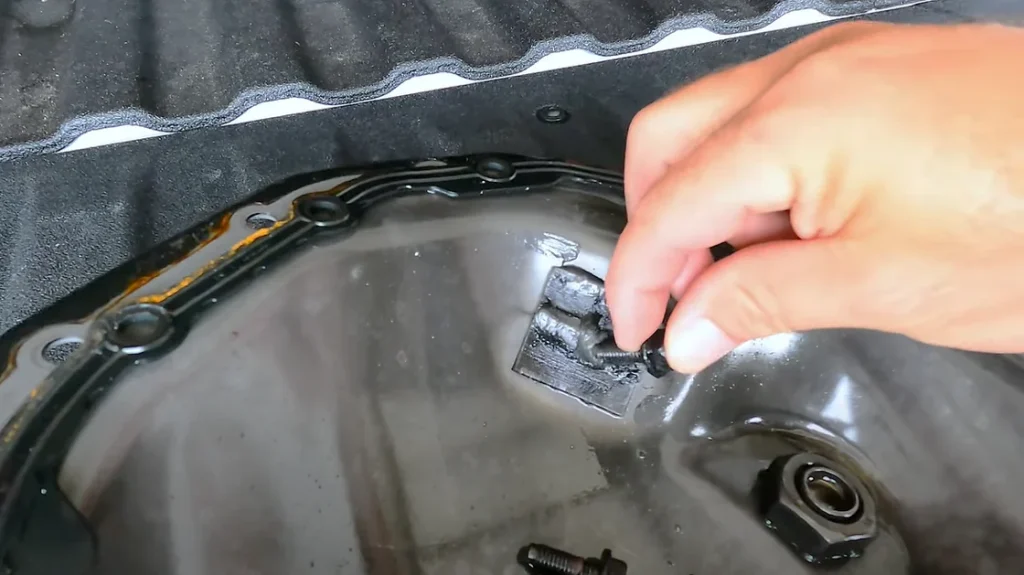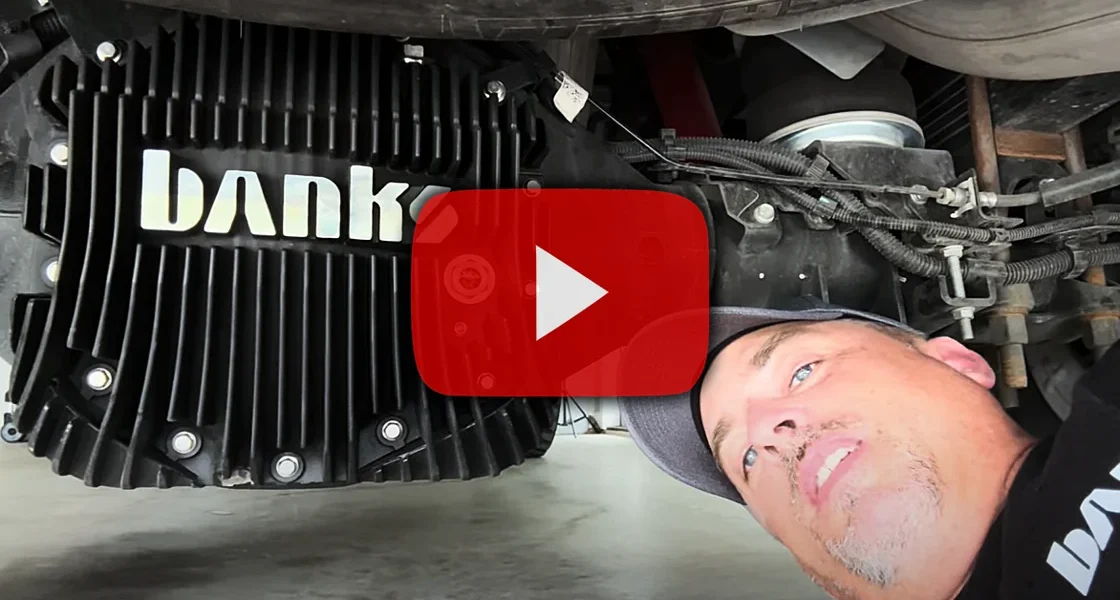Banks makes maintenance easy
Full Video Transcript
00:01 all right want to thank You’ for tuning the video today morning to my truck just to kind of show you I’ve got the banks differential cover installed but today’s video is not necessarily going to be 100% about that it’s going to be about what the fluid looked like when I pulled
00:11 the cover how much breaking material was on there and the level at what you should fill it and how much it holds and what type so let me get out of from under this truck and let’s get into this video all right so behind me I’ve got a 24 Denali durmax and it has the on ton
00:26 axle which is the 12 in and the one ton package on it which has the overloads and you know I I put the bank’s differential cover on it if you want to go to the bank’s website you can use my code Rocky and get 10% off of anything you purchase on there um welcome to do
00:39 that right now if you want I’ll put a link at the end of the video for that okay anytime that I have the opportunity to reduce my temperatures on my equipment I’m going to do it okay when it comes to differential covers transmission pans stuff like that one of the main reasons is is I tow close to
00:54 payload and so I’ve got a pretty good amount of weight on the back of this truck 50% of the time and I’m also uh in South Texas so we’ve got triple digit temperatures down here okay so it’s really hot it’s important to keep it cool and things are going to last longer when you keep them cool and
01:12 so for me I put the bank’s differential cover okay now next question is is what type of fluid okay cuz I looked that up everywhere these trucks range so you really need to go byy your VIN number go to your dealer and find out mine took the 7590 full synthetic I put the GM
01:29 fluid back in it and it’s a grape scent fluid comes in a round bottle little round quart um so anyway just if you want to get that 7590 I think the dues take like a 751 something so anyway everyone’s different the capacity on it for me what I did was is I went through
01:45 and looked at it and on the stock cover right here you can see that this is your F port and this Hol is like right across from it so it’s supposed to be about the bottom of that field Port so I measured that so I should be about a quar to half sight glass on the bank’s cover okay so
02:03 I got four quarts of that came home it took about 3.6 to 3.7 I just had a little bit left in that fourth qu and I put it like between half and a quarter basically on the Side Glass and so anyway got that done but one of the things I want to talk about is looking
02:17 at the material is it worth doing it at 5,000 Mi 10,000 Mi right so like I said I got about 1,000 Mi Towing about 4,000 Mi of average highway aity driving and you know looking at it and looking at the fluid for me it’s my preference you know everything’s going to have Breakin
02:33 material okay transmission’s going to make it your engine’s going to make it differential is going to make it what that means is you’re going to have some material in the beginning right it’s just going to break in and then some of that material is going to stick in the
02:44 magnet it’s going to go in the filters you know all that stuff that it always does but for me I like to get that material out okay that’s my preference that’s not something manufacturer recommends or anything I just usually will change my fluids pretty quickly like my first oil change is about5 200
02:58 miles just because I know there’s going to be a lot of you know a lot of stuff coming out of that engine a lot of things coming out transmission and the rear end okay so we do have a little bit of material on this rear end it’s not terrible but if you look right there you can
03:12 see all that’s metal which this is about common it’s it’s not not too much or not too less um I did see a little bit of material still in the fluid and so being that it only holds four quartz for me um if I was buying another truck and doing this again I probably wouldn’t till over
03:30 10,000 Mi and that’s just my preference it’s my opinion so I would change get that break-in fluid out put some fresh fluid in it now when you put the banks differential on there gets real easy to change that fluid and I can tell you the way I look at it I’m probably going to
03:43 go 20,000 and then I’ll change it again but now I’ve got a magnetic plug on the bottom I can just pull that plug put the new fluid in I don’t have to pull the whole cover so it makes it simple same thing on the transmission pan that’s going to have a a cooling pan on it
03:57 you’re going to have the drain plug able to drain the fluid makes that much easier okay so up to you on what you want to do on that like I said my code’s Rocky if you want to go to bankspower.com I’ll put a link to it right here at the end of the video If Video helped you and please hit that
04:11 like And subscribe and we’ll catch you on the next video
There are a lot of videos out there about the installation of Banks Ram-Air Differential Cover, but Rocky Rohde took to his channel to show something that isn’t commonly talked about, let alone anything shown about it. He’s done an installation video of the cover on a 2022 Ram before, but his current video has him inspecting the fluid and metal shavings in a 2024 GMC Denali with just 5K miles on the odometer. “I’ve got the Banks cover installed,” said Rocky. “But today’s video isn’t necessarily about that. It’s going to be about what the fluid looked like when I pulled the cover, how much break-in material was in there, the level that you should fill it, how much it holds, and what type.”

As Rocky points out in the video, the Ram-Air Differential Cover’s easy fill and drain ports make servicing your rear end a snap. And with its magnetic plug, both fill and drain, your truck will get even more protection from harmful contaminants. That’s all on top of its class-leading fluid dynamics and patented Ram-Air cooling system.
Discover how this cover enhances towing performance in “2020 Duramax Upgrades”.


